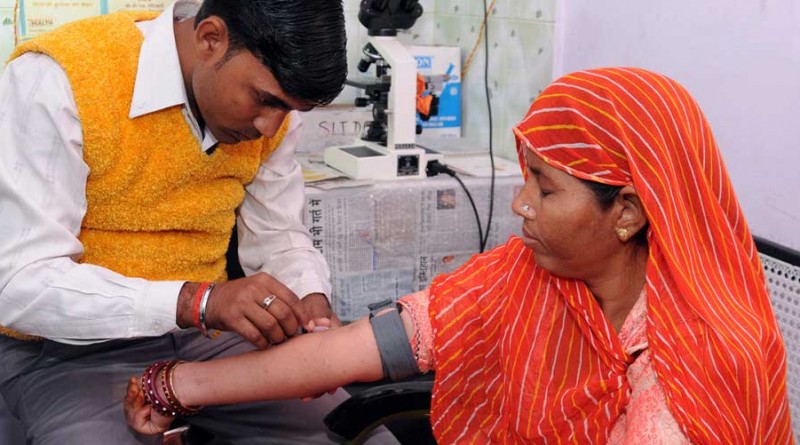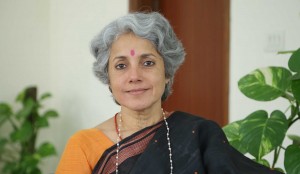Rising Disease Burden
The Indian Council of Medical Research (ICMR) has undertaken a nationwide study with the aim of addressing the scarcity of information on diabetes and the other metabolic Non-Communicable Diseases (NCDs). The first phase of the study has reported alarming outcomes
By Amresh K Tiwary
India is reported to have the second highest number of diabetic individuals in the world, but there is no reliable data on the national prevalence of diabetes as well as the other major diseases such as hypertension, obesity, dyslipidemia and a large number of growing non-communicable diseases (NCDs). The Indian Council of Medical Research (ICMR) decided to undertake a nationwide study to obtain reliable and accurate data on diabetes and other metabolic NCDs.
The ICMR-INDIAB Study is a cross-sectional, community-based survey of adults of either sex, aged 20 years and above, aimed at determining the national prevalence of type 2 diabetes mellitus and pre-diabetes (Impaired fasting glucose/ Impaired glucose tolerance) from all the 28 states, national capital territory (NCT) of Delhi and 2 union territories (UTs) namely Chandigarh and Puducherry in the mainland of India.

It is one of the first national studies to look at the prevalence of diabetes, hypertension, obesity and dyslipidemia in all the states of the country. The other three major objectives of this study are—(1) To determine the prevalence of hypertension and hyperlipidemia in urban and rural India, (2) To determine the prevalence of coronary artery disease among subjects with and without diabetes and (3) to assess the level of diabetes control among self-reported diabetic subjects in urban and rural India.
Overall, the study has been initiated to estimate the prevalence of diabetes in India in a phased manner. In the first phase of this study, three states namely Tamil Nadu, Maharashtra, Jharkhand and one Union Territory namely Chandigarh located in the south, west, east and north of the country, respectively were observed. A stratified multi-stage sampling design was used for the phase-I of this study in which total 16,607 individuals were selected and 14,277 [86%] individuals participated. According to the first phase of this study, the weighted prevalence of diabetes (both known and newly diagnosed) was as follows: Tamil Nadu – 10.4%, Jharkhand – 5.3%, Chandigarh – 13.6% and Maharashtra – 8.4% (One of the primary objectives of the study was to find out the prevalence of prediabetes in these regions).
The figure presents the prevalence of prediabetes in the urban and rural population in the four regions. The prevalence of prediabetes was 8.3%, 8.1%, 14.6% and 12.8% respectively in Tamil Nadu, Jharkhand, Chandigarh and Maharashtra. Except in Chandigarh, the prevalence of Prediabetes was higher in urban areas in all age groups.
ICMR-INDIAB north-east component, which is now ongoing, includes the north-eastern states of India namely Sikkim, Assam, Meghalaya, Tripura, Mizoram, Manipur, Nagaland and Arunachal Pradesh. The ICMR-INDIAB-Rest of India (ROI) component (Phase II) involving several other states of India is currently in progress.
Rising Cardiovascular diseases
The burden of cardiovascular diseases (CVDs) is also increasing all over the world, so much so that it has emerged as a major concern in developing countries, including India. However, it is already a known fact that hypertension and dyslipidemia are the two major contributing risk factors for CVD and the Phase I of the study has thrown some interesting data on the prevalence of hypertension and dyslipidemia in the four states of Tamil Nadu, Jharkhand, Chandigarh and Maharashtra.
Chandigarh topped the list with highest prevalence of hypertension
In urban areas, the highest prevalence of hypertension (overall) was observed in Chandigarh (32.6%) and Tamil Nadu (32.3%) followed by 30.5% in both Jharkhand and Maharashtra. In rural areas, Tamil Nadu had the highest prevalence of hypertension (28%) followed by Maharashtra (24.5%), Jharkhand (22.2%) and Chandigarh (20.4%).
As far as dyslipidemia is concerned, the prevalence of dyslipidemia ranged from 75.7% in urban Maharashtra to 87.2% in urban Chandigarh and 76.5% in rural Tamil Nadu to 81.1% in rural Chandigarh.
The highest prevalence of obesity (both generalized and abdominal) was seen in urban and rural Chandigarh. In all the regions, prevalence of both In terms of glycemic control, the proportion of diabetic subjects with good glycemic control in urban areas was 30.1%, 34.7%, 29.6% and 31.6% in Tamil Nadu, Jharkhand, Chandigarh and Maharashtra respectively and it was 37.5%, 22.2%, 17.0% and 40.0% in rural areas respectively.
Lack of awareness on diabetes
Urban Jharkhand and rural Maharashtra had the highest proportion of diabetic subjects with good glycemic control. Regarding awareness of diabetes in the study population, only 58.4% of the urban residents and 36.8% of the rural residents reported that they knew about a condition called diabetes, of these only 65.7% of the urban residents and 51% of the rural residents were aware that diabetes could be prevented. The prevalence of coronary artery disease (CAD) among subjects with and without diabetes is shown in.
In both urban and rural areas, the prevalence of CAD was higher among diabetic subjects compared to subjects without diabetes. Maharashtra (both urban and rural) had the highest prevalence of CAD among diabetic subjects compared to other regions. Generalized and abdominal obesity was higher in urban areas compared to rural areas.
According to Dr. Soumya Swaminathan, Secretary, Department of Health Research and Director General, ICMR, “Diabetes represents one of the important NCDs. Reliable population based data on the burden of NCDs like diabetes is necessary to plan preventive and curative health services in the country.”
In this context, the study representing the states of Tamil Nadu, Maharashtra, Jharkhand and the Union Territory of Chandigarh has now been completed and the data has been compiled in a report. The results of all these four regions have already been shared with the respective state governments. These are invaluable data, as they provide a snap shot of the existing burden of disease in the country.
Dr. Swaminathan further informs, “The ICMR-INDIAB Study is a cross-sectional, community- based survey of adults of either sex, aged 20 years and above, aimed at estimating the prevalence of diabetes and pre-diabetes across the country.”
According to Dr. Lalit M. Nath, Chairperson, Expert Group, ICMR-INDIAB, “The study is one of the first national studies to look at the prevalence of diabetes, hypertension, obesity and dyslipidemia in whole states of the country. It gives me great pleasure to write this Preface for the ICMR-INDIAB study (Phase I) comprising of 4 regions of India and conducted between 2008 and 2010.”
“I am particularly happy that the study has ensured capacity building in the prevention and control of NCDs in various states where the study is being done and particularly help individual states in planning and policy formulation for diabetes in the context of the disease status in their urban and rural areas. I am sure that this report will be useful to all researchers in this country and abroad,” he added.
The first Phase of the ICMR-INDLAB study has already been completed. The other phases of this study, which will include rest of the Indian states, including the north eastern states of the country will also be completed soon and then we will have accurate and valuable data on intensifying NCDs such as diabetes, hypertension and obesity from urban and rural areas of all parts of our country. Such data is extremely valuable to policy makers and the other stake holders.


